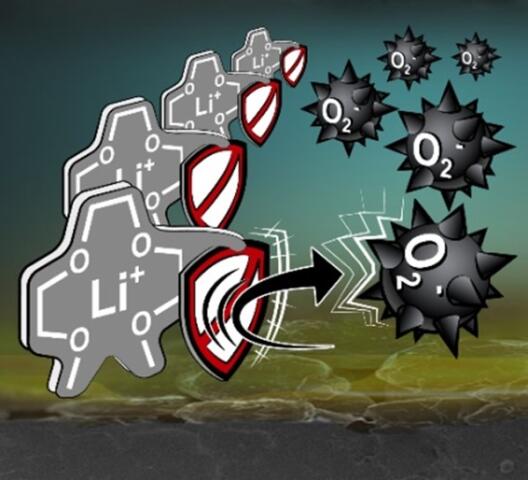Improved Cycle Life of Disordered Rocksalt Cathodes
Disordered rocksalt (DRX) cathodes have the potential to be both sustainable and high-performing due to their high initial specific capacities (>200 mAh g-1) as well as flexible chemical composition. Simultaneously, transition metals such as manganese and iron are used, which are more abundant, low-cost and less toxic than nickel and cobalt used in state-of-the-art lithium-nickel-cobalt-manganese (NCM) electrodes. However, poor cycle life and rapid voltage decay needs to be overcome for their practical application. A team of MEET Battery Research Center at the University of Münster, Helmholtz Institute Münster of Forschungszentrum Jülich and the State Key Laboratory of Physical Chemistry of Solid Surfaces of Xiamen University, China, has now investigated the impact of the electrolyte formulation on the capacity loss of the cathodes upon cycling and how different electrolyte solutions can improve the electrochemical performance of the battery cell.

State-of-the-art Carbonate-based Electrolyte vs. Solvate Ionic Liquid Electrolyte
So far, research has concentrated on optimising the cycle life of cathodes based on DRX materials, for example, by adapting their structural properties and chemical composition. The influence of the electrolyte has only been analysed to a limited extent. However, the decomposition of conventional carbonate-based electrolytes due to oxygen species released by the irreversible proportion of anionic redox can be considered as one of many factors contributing to the drastic capacity fade exhibited by DRX cathodes. “We investigated how a more chemically stable solvate ionic liquid electrolyte improves the electrochemical performance of this type of cathode materials,” explains scientist Lennart Wichmann, MEET Battery Research Center and Helmholtz Institute Münster.
Using complex analytical methods, the research team concluded that a solvate ionic liquid electrolyte improves the capacity of both lithium-ion and lithium-metal batteries with a disordered rocksalt cathode, as interfacial resistances, for example, remain stable. “This work represents an important step towards improvement of DRX cathodes without interference of electrolyte decomposition and can be a base for further research,” says Wichmann.
Complete Study Open Access
The detailed research results have been published by Lennart Wichmann and Prof. Martin Winter, MEET Battery Research Center and Helmholtz Institute Münster, Jan-Paul Brinkmann, Helmholtz Institute Münster, Mingzeng Luo and Prof. Yong Yangc, State Key Laboratory of Physical Chemistry of Solid Surfaces at Xiamen University, as well as Dr Richard Schmuch, Dr Tobias Placke and Dr Aurora Gomez-Martin, MEET Battery Research Center, in the journal “Batteries & Supercaps”.

